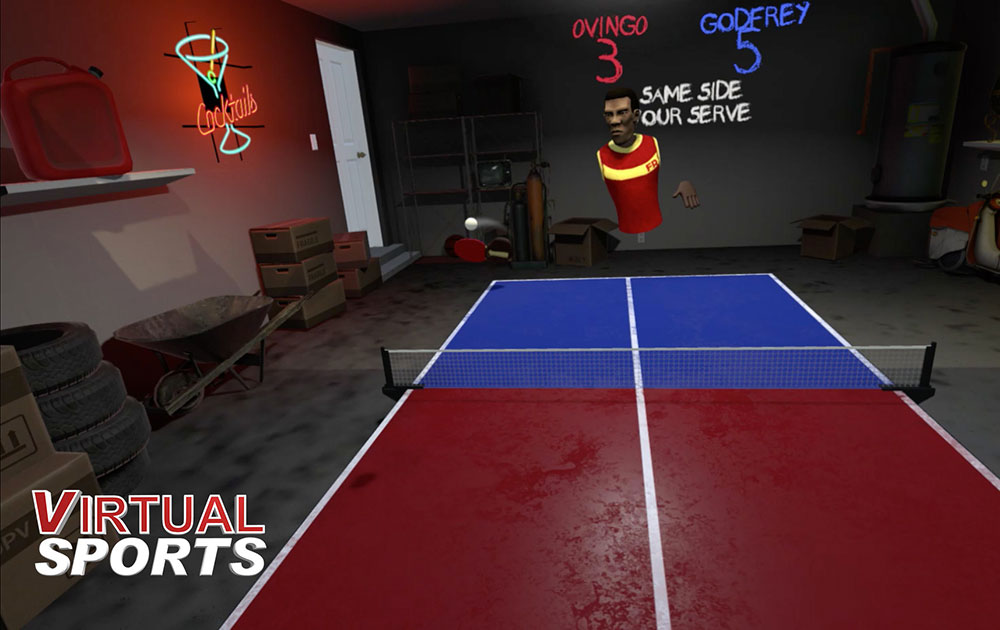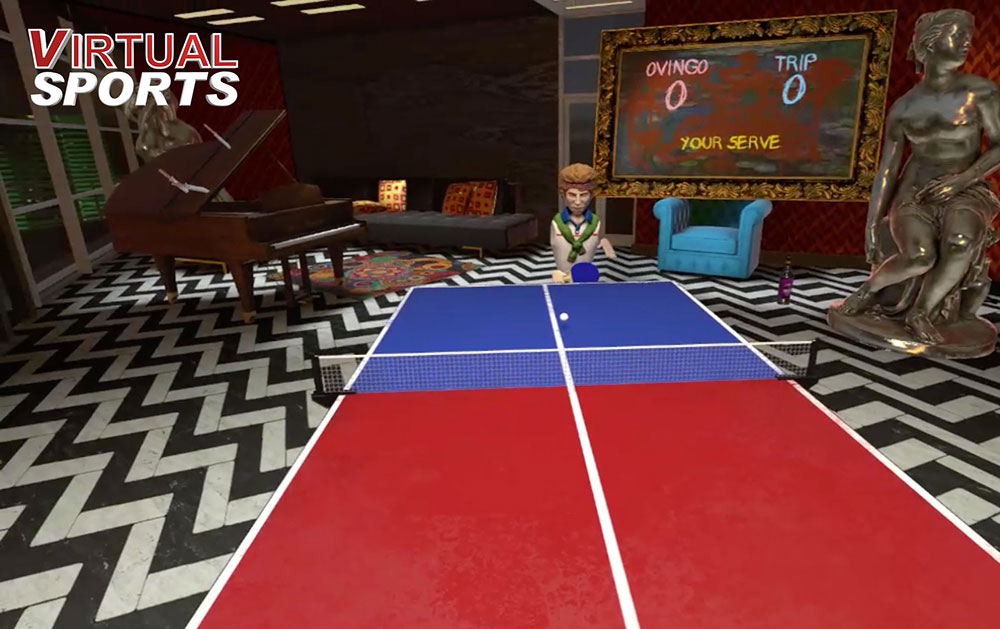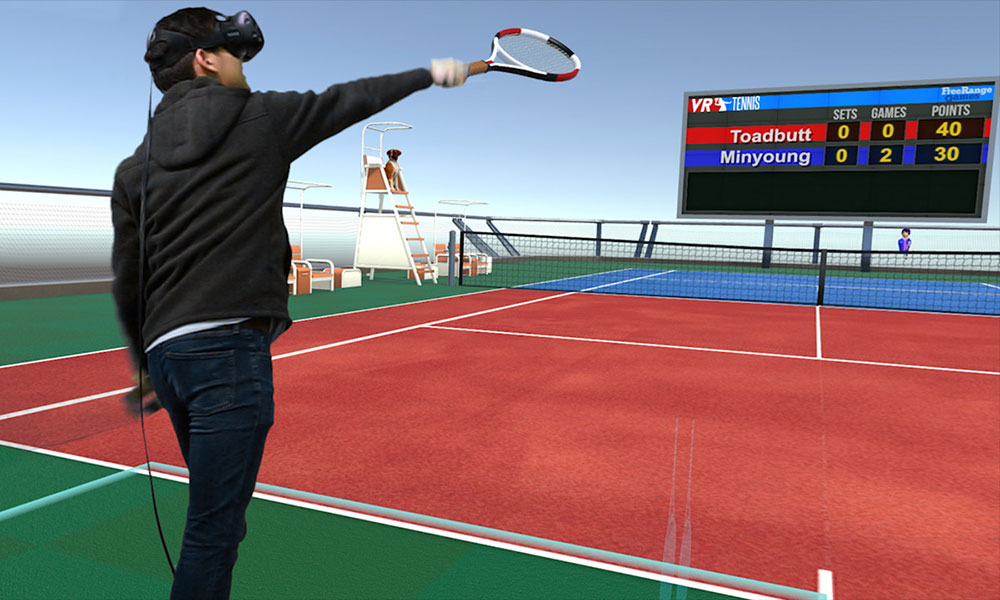Virtual Sports brings reality to the table

Metaverse
5 minutes read
What goes into making a near-perfect recreation of a real world sport, with accurate physics and a real ‘feel’? We asked Free Range Games about that challenge with their new title, Virtual Sports.

Hello! Tell us who you are and what you do.
I’m Burke Drane, president and CTO of Free Range Games, and I’ve spent the last six months shirking my other responsibilities and coding Virtual Sports. I’ve been coding games since the original PlayStation, and I made a Goosebumps game on the Gear last year, but with the Vive, I wanted to make something essential. We were discussing what the ‘Pong’ of VR would be when HTC approached us, and we quickly decided sometimes the best pong is pong. I’ve got an engineering background, so most of my answers are about physics!
There have been plenty of sports-based VR titles – what makes Virtual Sports different?
A little after we got our first demo running, other ping pong games started to launch on Steam: VR Ping Pong, Eleven, Paddle Up, some funny Tennis with unicorns thing… they each do things a bit differently, but they all show ping pong is a great game for Vive. It’s pick up and play, and the play space fits in the Vive play space.
When you shovel the ball back and forth over the net, the immersive illusion is pretty great. But, as you actually start playing the way you would in real life, the illusion often falls apart. From bad drag and latency pops, to just bad math and sloppy use of Unity physics in converting the friction of the paddle into angular momentum and from there calculating the magnus force that bends the flight of the ball. (Science Editor’s Note: The magnus force, or magnus effect is “the commonly observed effect in which a spinning ball curves away from its principal flight path”. More from Wikipedia.)
We discovered, when studying pro-level players who were really smashing the ball, that we had to run our collision simulation between ball and paddle over 10,000 hz in order to maintain the sub-millimeter level precision you expect from the Vive. (More Science: Virtual Sports actually calculates the physics for ball movement and racket collisions every 30,000th of a second!)
While it’s hard to maintain the same level of realism in tennis, since the ball affects the racket in a way it doesn’t in ping pong, we still give a level of realism the other sports games weren’t doing.
At the same time as the other games lack realism for skilled players, we found they were too hard for new players. Tennis and ping pong are hard, so another key difference is our Fun Mode. We use video-game techniques to simulate where the ball is going to land, and then make mostly undetectable adjustment to keep the ball in play.
What we were surprised to discover was that when we turn fun mode off, new players were able to continue playing at a higher level of skill, and that good players also really enjoyed keeping it on.
Virtual Sports features ping pong and tennis, and clearly both have similar ‘mechanics’. How did you try and make sure each sport felt different?
They are similar in rules and swinging something at a ball, but the physics turn out to be quite different. The ping pong paddle is rigid and applies all its force based on friction, speed, and something called the coefficient of restitution. The tennis racket is a lot more complex. The strings absorb the impact and return it to the ball as they part.
We didn’t ever think about making them feel different. We focused on making them feel real, so the differences in the game are based on their real differences.

Tell us about some of the players you can face off against in single-player career mode.
I’d compare the opponents to the boxers in Punch-Out. They aren’t one trick ponies, but they each teach you one thing. Minyoung teaches you to play defensively. You take advantage of Godfrey’s weak backhand. Granny is consistent, but slow, so you need to put it out of her reach. Swerve is the spin master, but he often misses shots right up his middle. They are each based on a mechanic in the game, and pros we watched reviewing ping pong and tennis footage.
What about the multiplayer mode?
Like the single player, the focus is realism. Obviously, in ping pong, where the ball travels between players in a fraction of a second, latency is a huge issue. Rather than use a traditional server-client model, we use a special peer-to-peer model where authority is passed to the guy receiving the ball. You never lose a point because of simulation differences between the two machines. But the super special secret sauce involves hiding the latency in subtle timing changes from the point of view of the guy who just hit the ball such that both players see the ball with latency-defying synchronicity.
Finally, of ping pong and tennis – which do you prefer to play?
I’m a better ping pong player in real life, but I’ve been playing a lot more tennis since starting the project. With all the focus on the realism in the game, the best feature for someone my age is that you don’t have to chase the balls. It’s annoying to do in ping pong but takes half the time in tennis (especially when you hit over the fence a lot) So, at the end of the day, I think I have to go with virtual tennis.
Virtual Sports is available now on Steam.

